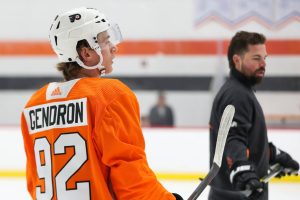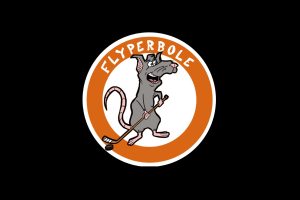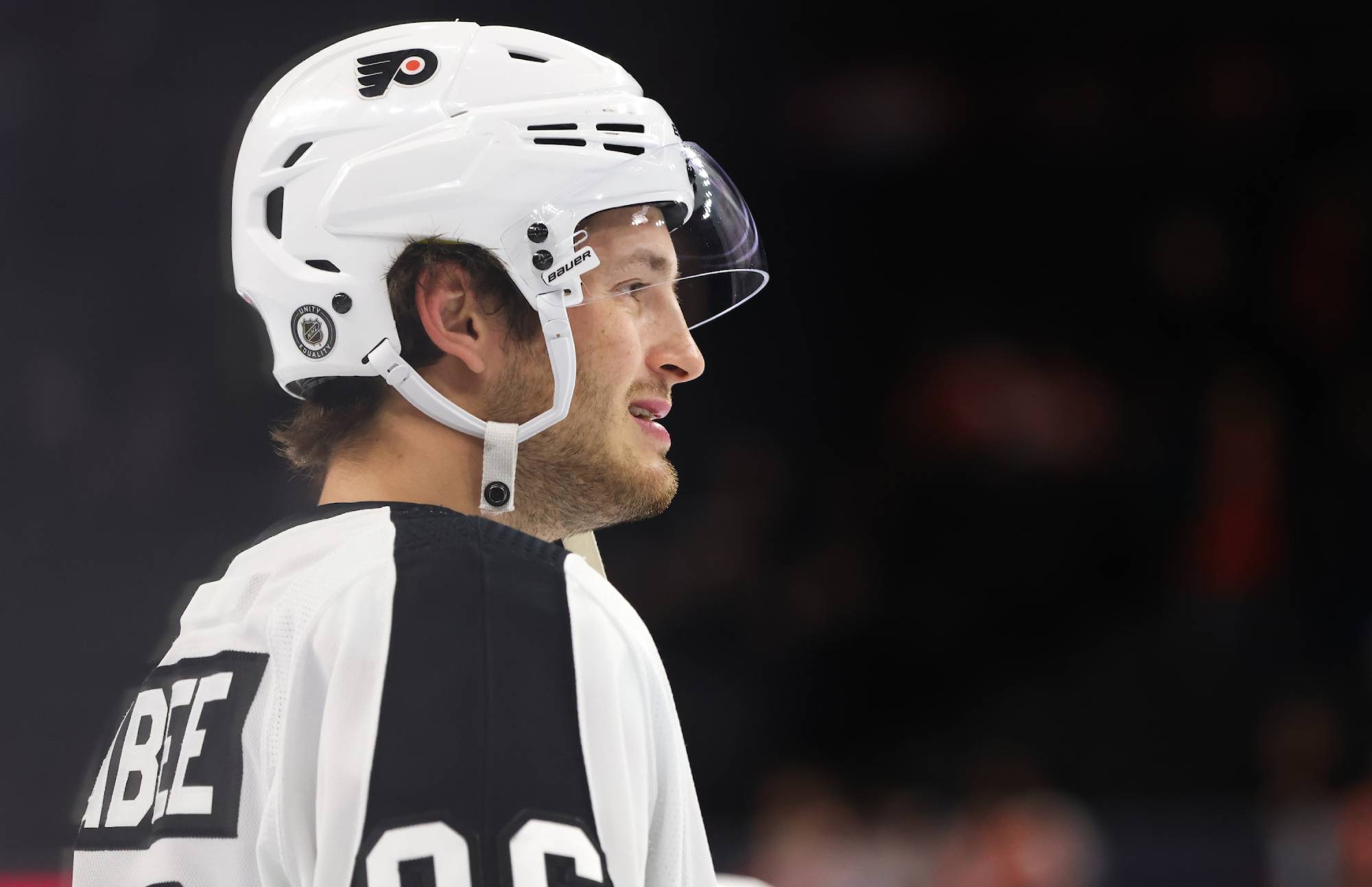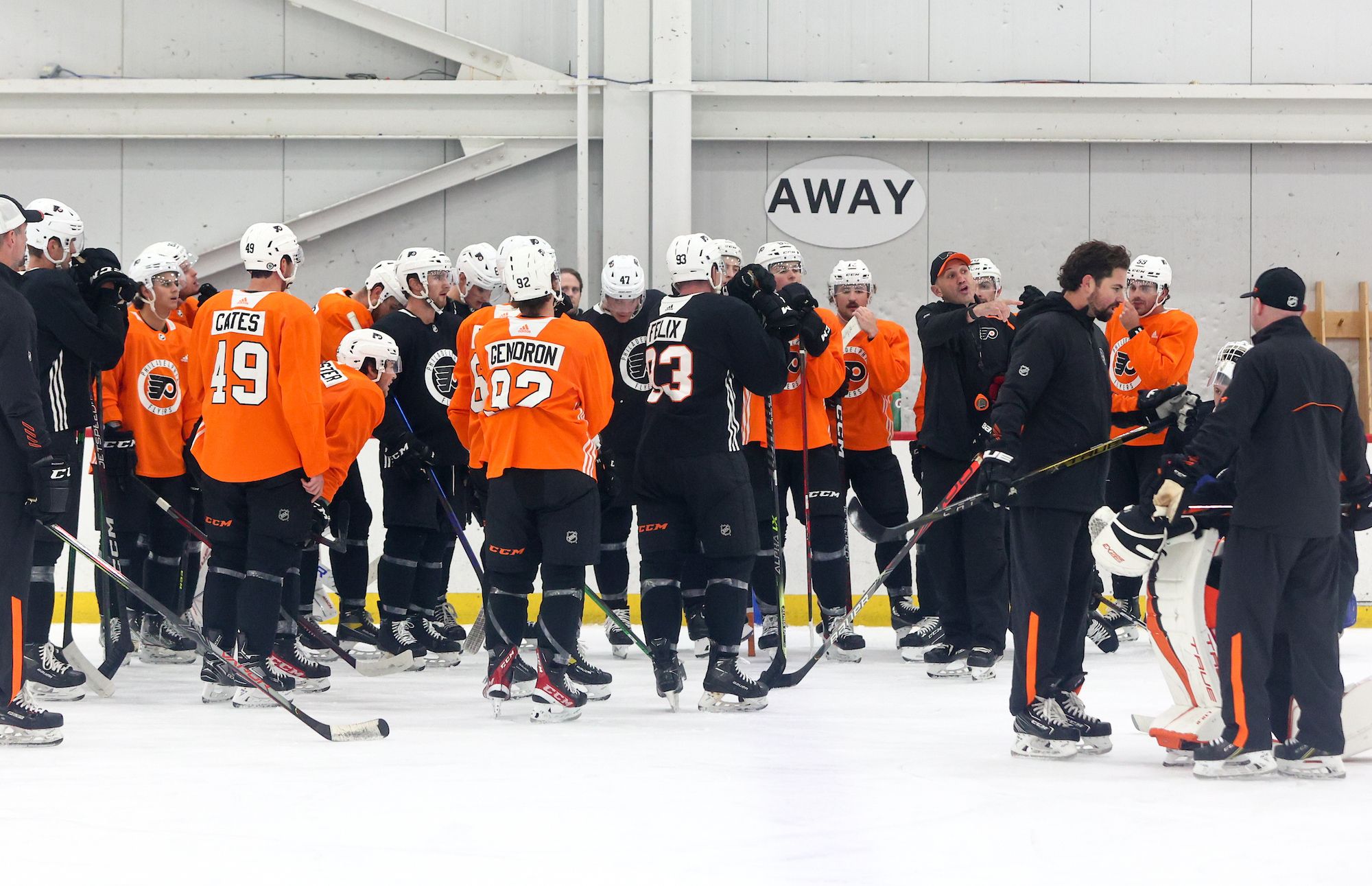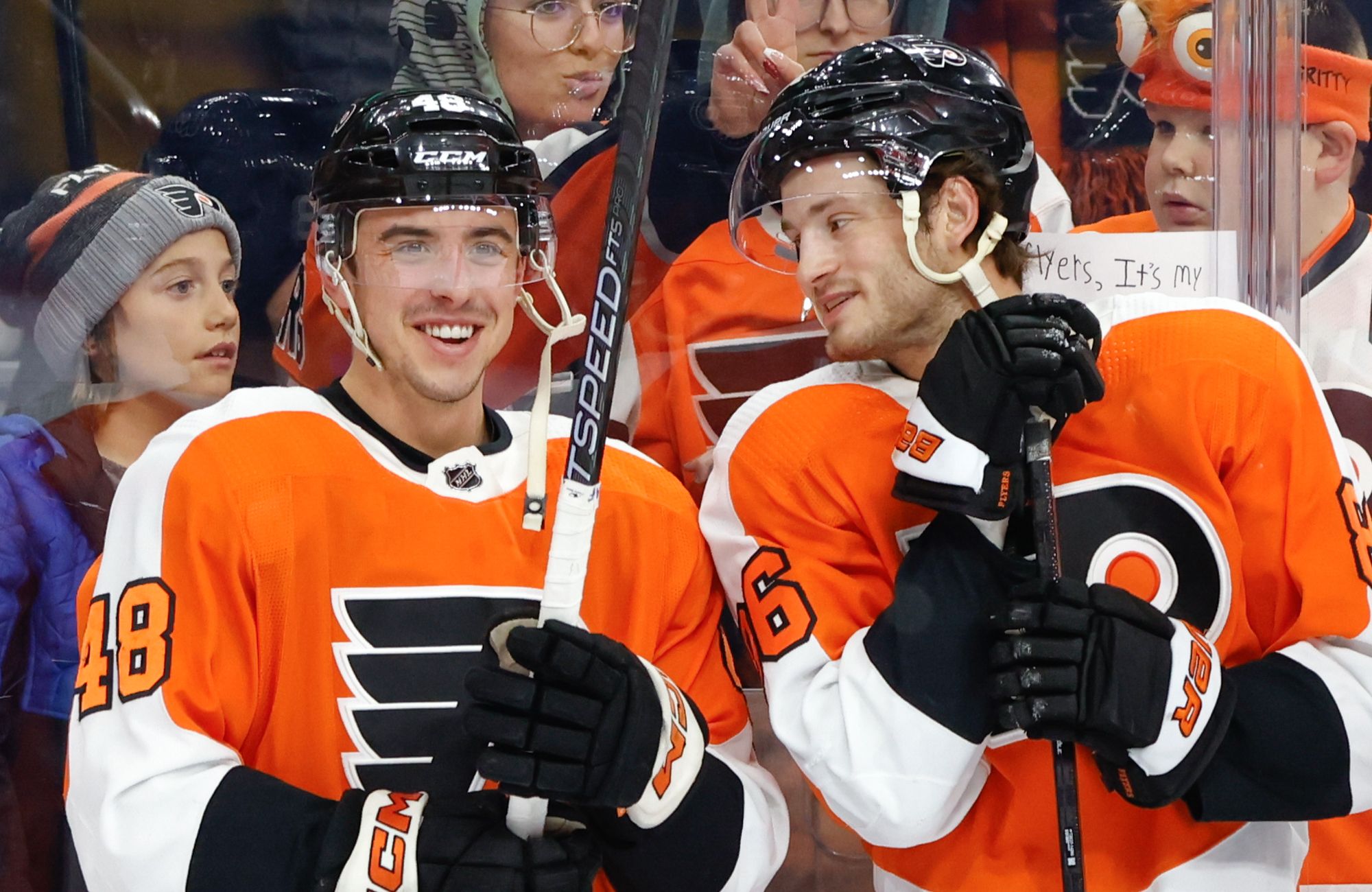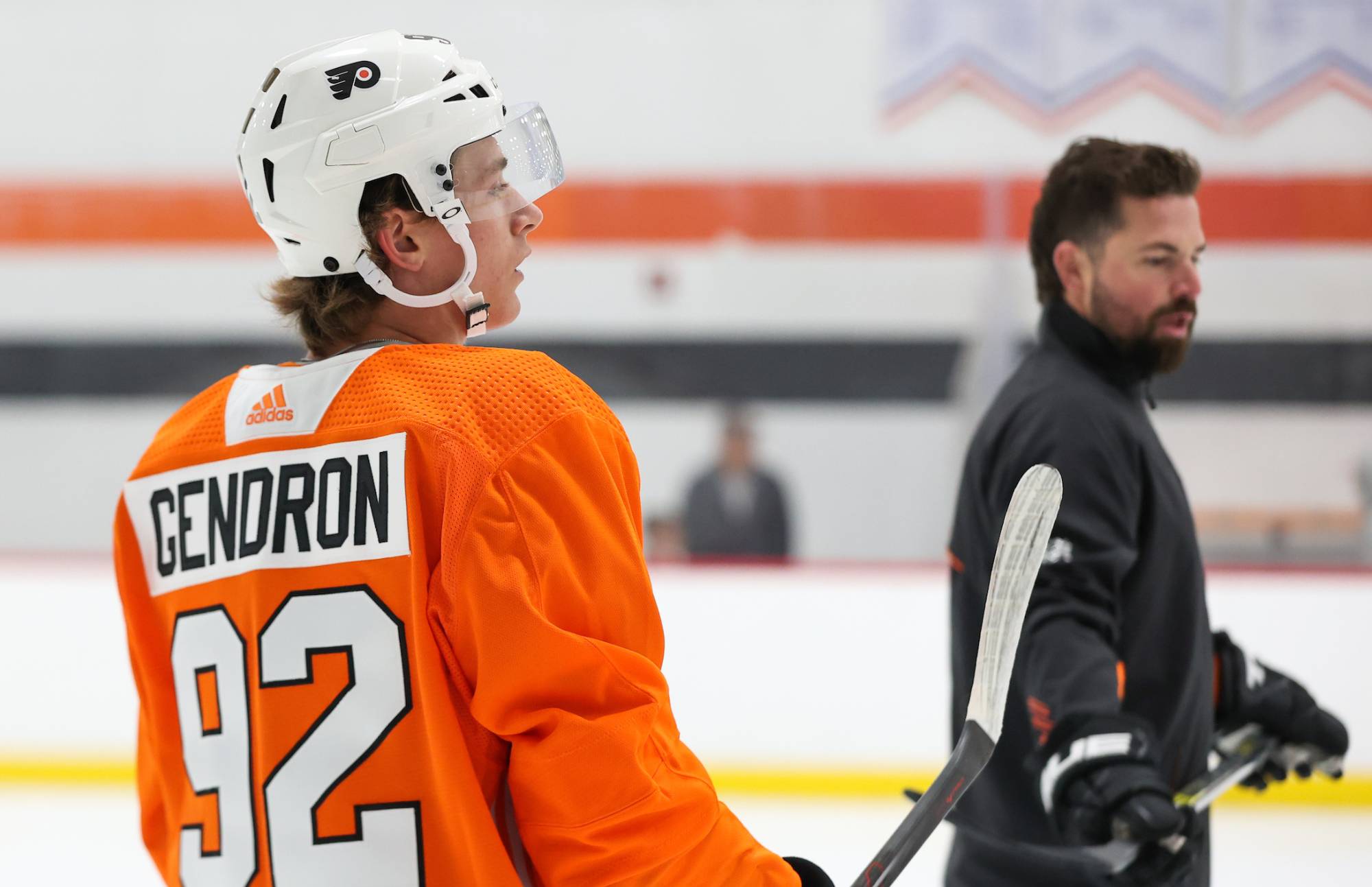Entering the 2015-16 season, the biggest weakness of the Philadelphia Flyers was obvious – a totally underwhelming blueline corps. In fact, there was a good case to be made that it was among the worst in the NHL on paper.
Think back to how the Flyers’ defense looked back in October. The depth chart consisted of a 38-year old veteran best suited for second pair duty, a 33-year old in his first NHL season, an offensive-minded blueliner cast aside by two of the most creative offensive head coaches of the era, a throw-in trade piece from Tampa Bay, a 25-year old with four years of AHL experience, a veteran many league observers thought was finished as an NHL player in 2014, and Luke Schenn.
But instead of the disaster it threatened to become, the Flyers’ defense has actually been passable this year. It helped that Michael Del Zotto and Radko Gudas dramatically exceeded expectations, and that the mid-November call-up of Shayne Gostisbehere brought much-needed firepower to the back end. With a month and a half remaining in the season, Philadelphia sits just three points out of the final playoff spot in the Eastern Conference, and the play of the team’s defense has been a big reason the Flyers are still in the hunt.
Still, the loss of Del Zotto to a season-ending wrist injury in February has hit the defense hard. Del Zotto was an every night first-pairing defenseman, and the injury forced the Flyers to recall Andrew MacDonald to move into the seven-man blueline rotation. With the trade deadline passed, Philadelphia must use some combination of Mark Streit, Shayne Gostisbehere, Nick Schultz, Radko Gudas, Evgeny Medvedev, Brandon Manning and Andrew MacDonald in their push for the postseason.
But what is the best combination to use? Which players should be receiving the most ice time, and which ones would help the team most by sitting up in the press box?
A glance at the numbers
Since the vast majority of a hockey game is played at even strength, let’s start by determining which remaining Flyers defensemen have been best at driving play this season during 5-on-5 situations (all metrics are score-adjusted).
| Defenseman | Games Played | Corsi Relative to Teammates | Team Corsi For Percentage when On-Ice | Team Corsi For Percentage when Off-Ice | Corsi For Per 60 | Corsi Against Per 60 |
| Radko Gudas | 56 | +4.75% | 52.25% | 47.50% | 56.45 | 51.59 |
| Evgeny Medvedev | 42 | +4.28% | 52.18% | 47.90% | 55.64 | 51.00 |
| Shayne Gostisbehere | 44 | -0.01% | 49.88% | 49.89% | 53.2 | 53.44 |
| Brandon Manning | 37 | -1.44% | 48.04% | 49.47% | 52.12 | 56.38 |
| Mark Streit | 43 | -2.57% | 47.26% | 49.83% | 50.51 | 56.37 |
| Andrew MacDonald | 9 | -5.27% | 51.25% | 56.52% | 51.99 | 49.45 |
| Nick Schultz | 61 | -5.41% | 45.28% | 50.69% | 45.9 | 55.46 |
And now, their performance since the start of January.
| Defenseman | Games Played | Corsi Relative to Teammates | Team Corsi For Percentage when On-Ice | Team Corsi For Percentage when Off-Ice | Corsi For Per 60 | Corsi Against Per 60 |
| Evgeny Medvedev | 17 | +8.5% | 55.7% | 47.2% | 58.6 | 46.5 |
| Radko Gudas | 26 | +1.5% | 51.0% | 49.5% | 56.8 | 54.6 |
| Mark Streit | 26 | +0.5% | 50.3% | 49.8% | 52.7 | 52.0 |
| Shayne Gostisbehere | 24 | +0.1% | 49.5% | 49.4% | 51.9 | 52.8 |
| Brandon Manning | 10 | -4.3% | 48.5% | 52.8% | 53.9 | 57.3 |
| Nick Schultz | 26 | -4.9% | 46.5% | 51.4% | 47.2 | 54.2 |
| Andrew MacDonald | 8 | -5.4% | 50.8% | 56.2% | 49.7 | 48.1 |
There are a number of observations that we can make from this data to help inform the ideal statistical roster construction. Let’s break them down one-by-one.
Takeaway No. 1: Medvedev needs a larger, permanent role immediately
Since early November, defenseman Evgeny Medvedev has been in and out of the Dave Hakstol doghouse. He’s been a repeated healthy scratch, and the coaching staff has expressed frustration with the Russian’s inconsistent play in the defensive zone and struggles in transitioning to the smaller ice surface of North America.
If they want to take a serious run at the playoffs, however, it’s time to put those concerns aside.
Medvedev has been an above-average play driver all season, but his performance has entered the stratosphere in 2016. In the games so far this calendar year that Medvedev has dressed in, with him on the ice, Philadelphia has a 55.7% score-adjusted Corsi – a mark better than every NHL team except the Los Angeles Kings. But when Medvedev is on the bench, the Flyers play more like the Calgary Flames or Vancouver Canucks (47.2% score-adjusted Corsi).
No one questions Medvedev’s skillset. Even an amateur scout can see that Medvedev is a plus skater, strong physically, and has great puck-moving instincts. It’s been the little things that have clearly bothered the Flyers, but those issues are not preventing Medvedev from producing like an extremely effective defenseman.
There isn’t even a discrepancy between his on-ice shot metrics and his goal metrics. With Medvedev on the ice at 5-on-5 this season, the Flyers have scored 27 goals and allowed 22, for a Goals For percentage of 55.1%. That’s even better than his performance in shot generation and suppression.
Evgeny Medvedev not only should never spend time in the press box, he should be getting as many even strength minutes as he can handle.
Takeaway No. 2: Mark Streit has been much better since returning from injury
Streit’s full-season metrics still look pretty poor, but he’s actually been slightly above break-even from a puck possession standpoint since returning from his lower body injury.
He got off to a slow start this season, and then played through increasing pain in the weeks prior to being placed on injured reserve. But as Streit’s speed has slowly returned, his metrics have trended upwards. Over the past two months, Streit has again looked like the solid second-pairing defenseman that the Flyers were expecting him to be.
His metrics have also been deflated because of the amount of time spent alongside Nick Schultz, one of the team’s worst possession defensemen. With Schultz in 2016, Streit has averaged a 47.2% Corsi For percentage. Away from him, however, Streit’s metrics skyrocket all the way up to 55.9 percent.
Mark Streit is far from a superstar, but at age 38, he’s still doing his best to fight off the aging process.
Takeaway No. 3: The Flyers have an obvious top-four
With Mark Streit’s game clearly on the rebound, there’s a substantial gap between Philadelphia’s best four defensemen and their weakest three. Medvedev, Streit, Radko Gudas and Shayne Gostisbehere are the only blueliners left that can be expected to drive play in a positive direction at even strength.
That doesn’t necessarily mean that the top two pairings need to consist of some combination of the above four defensemen. But over the course of the next month and a half, these players should be the ones at the top of the 5-on-5 ice time per game charts.
Depending upon Andrew MacDonald, Nick Schultz or Brandon Manning for anything more than third-pairing minutes will only make it more difficult for the Philadelphia Flyers to make the playoffs. Two of them need to be dressed for each game, but limited roles would be best at even strength.
The next lock for the lineup
With Medvedev, Gudas, Streit and Gostisbehere locked into our imaginary lineup, that leaves two third-pairing spots left to be filled. None of the remaining options – Andrew MacDonald, Nick Schultz or Brandon Manning – are particularly adept at driving play during even strength, so the focus turns to whether any of them provide plus performance in other situations.
It turns out that there is one such role player, a veteran who has actually been one of the team’s best penalty killers over the past two seasons. That’s right — it’s Nick Schultz.
Schultz earns his way into a comfortable spot in the lineup because in his two seasons in Philadelphia, the 33-year old blueliner has established himself as a legitimately useful shorthanded shot suppressor. In fact, none of the active blueliners on Philadelphia’s roster have done a better job on the penalty kill this season.
| Defenseman | Shorthanded On-Ice Shots Against/60 | Shorthanded On-Ice High-Danger Chances Against/60 | Shorthanded On-Ice Goals Against/60 |
| Nick Schultz | 45.88 | 15.91 | 6.42 |
| Radko Gudas | 48.17 | 20.39 | 6.33 |
| Evgeny Medvedev | 56.53 | 21.88 | 9.12 |
| Brandon Manning | 57.59 | 24.00 | 8.40 |
| Andrew MacDonald | 60.10 | 24.04 | 7.21 |
| Mark Streit | 63.75 | 21.63 | 11.38 |
In shot, scoring chance and goal prevention, Schultz ranks either first or second in each category. His overall skillset may be limited, but the Flyers need his penalty killing prowess in the lineup. Schultz stays.
Manning or MacDonald?
That leaves us with Brandon Manning and Andrew MacDonald as the final candidates for a lineup spot. There are cases to be made for both defensemen.
Manning is the better neutral zone defenseman by a sizable margin, has superior full-season advanced metrics, and brings more of a physical edge. MacDonald is much better with the puck on his stick and has solid raw possession statistics this season (50.8% Corsi For percentage), even if his relative metrics remain poor.
The best solution for Dave Hakstol would be to play the matchups. In games against dump-and-chase reliant teams that don’t generate much speed through the neutral zone, MacDonald would be the best choice, as a defenseman with plus puck skills in the face of a heavy forecheck would be more needed. But when facing skilled teams who play more of a rush-oriented game, Manning makes more sense, as he is more likely to disrupt a play before it begins.
A matchup-dependent timeshare between Manning and MacDonald would allow Hakstol to play to the strengths of his third-pair defensemen while limiting their weaknesses. In this scenario, it’s not even impossible to imagine them driving play to an extent.
But what are the pairings?
Over the past few weeks, Hakstol has kept his defensive pairings fairly stable. Shayne Gostisbehere has been paired with Andrew MacDonald, Mark Streit skates alongside Nick Schultz, while Radko Gudas is paired with either Brandon Manning or Evgeny Medvedev, depending on which player is in the lineup.
Due to our re-evaluation of the defense, some changes will need to be made.
New Pairings
Gostisbehere – Gudas
Schultz – Streit
Medvedev – MacDonald/Manning
Radko Gudas played his best hockey of the season alongside Michael Del Zotto, who took the lion’s share of the puck-moving responsibilities and allowed Gudas to focus on disrupting plays in the neutral zone. We’ll try to replicate that by giving him Gostisbehere as a partner. Ghost may not yet have the two-way skills that Del Zotto showed this season, but this is a pairing that should be strong in the middle of the ice and good enough defensively to stay afloat at even strength.
With Schultz in the lineup, it’s best to keep him with Streit, who has shown an ability to carry him to even strength respectability. That leaves Evgeny Medvedev with the responsibility of playing alongside one of Andrew MacDonald or Brandon Manning every night, a thankless task. Still, Medvedev is the blueline’s best play driver, and most likely to provide value even with a weak partner.
Placing Medvedev with the team’s sixth defenseman does run the risk of limiting the minutes of the team’s best possession defenseman. To counteract this and to also keep the third-pair talent’s minutes low, we’ll occasionally utilize Medvedev-Streit and Medvedev-Gostisbehere pairings for offensive zone faceoffs. Cycled into play naturally, the adjusted pairs will allow the Russian defenseman to receive minutes commensurate with his talent.
Conclusion
With a little over a month remaining in the regular season, time is running out for the Flyers to make their playoff push. The best way for them to do so is to extract full value from their limited defense during the stretch run.
Elevating Evgeny Medvedev to heavy minutes and relegating both Andrew MacDonald and Brandon Manning to sixth defenseman status would be a great start. The Flyers now have a clear divide between their best four defensemen and their weakest three, so head coach Dave Hakstol should do his best to distribute even strength minutes accordingly.
It may take some defensive pairing juggling, and messing with a lineup that has produced three straight wins definitely comes with risk. But when the reward is a better chance at a surprising playoff berth, sometimes calculated gambles backed up with data are the best way to go.
All statistics from War-On-Ice, Stats.HockeyAnalysis.com, or Puckalytics.com.



